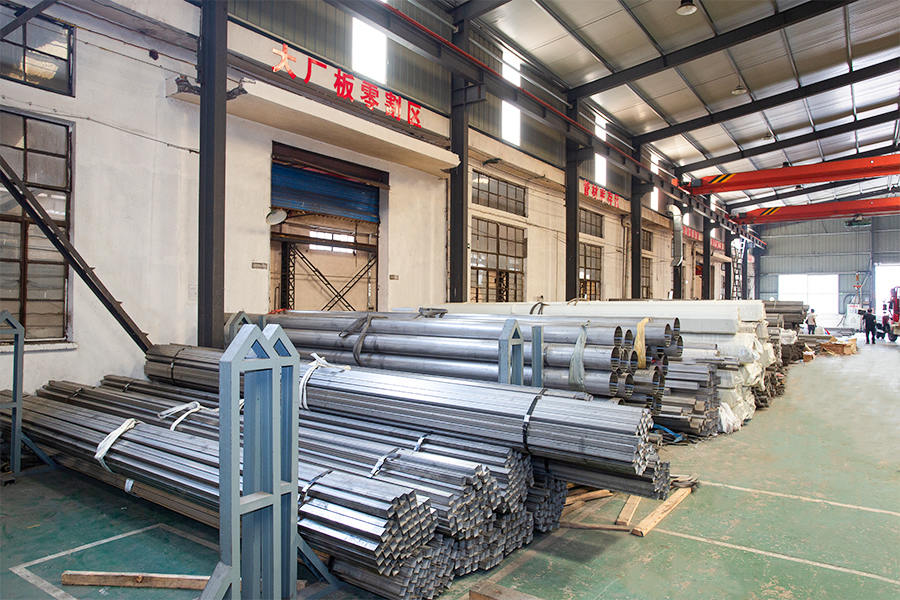Stainless Steel Welded Pipe is a pipe product made of stainless steel sheet or strip through cold forming and welding process. With its excellent corrosion resistance, high strength and beautiful appearance, stainless steel welded pipe has been widely used in construction, chemical industry, food processing, energy transportation and other fields.
The core advantage of stainless steel welded pipe lies in its excellent corrosion resistance. Stainless steel contains alloy elements such as chromium and nickel, which can form a dense oxide film on the surface, effectively preventing the external environment from corroding the pipe. This makes stainless steel welded pipe particularly suitable for use in humid, acidic, alkaline or high temperature environments.
High Strength and Durability
Stainless steel welded pipe has high mechanical strength and tensile strength, and can withstand greater pressure and load. This feature makes it an ideal choice for conveying high-pressure fluids and gases, and is also widely used in building structures.
Beautiful and easy to clean
Stainless steel welded pipe has a smooth and bright surface and has a good decorative effect. In addition, it is not easy to accumulate dirt and is easy to clean, so it is often used in food processing equipment, medical equipment and other occasions with high hygiene requirements.
Environmental protection and recyclability
Stainless steel is a green and environmentally friendly material with an extremely long service life and can be completely recycled and reused after being scrapped. This not only reduces resource waste, but also reduces the impact on the environment.
Manufacturing process and technological innovation
The production of stainless steel welded pipes mainly includes the following key steps:
Select suitable stainless steel plates or strips according to customer needs, and cut and pre-treat them to ensure the quality of subsequent processing.
Cold forming
The stainless steel strip is curled into a round or square tube blank through a rolling mill or other forming equipment. This process requires precise control of size and shape to ensure the accuracy of the final product.
Welding process
Welding is the core link in the production of stainless steel welded pipes. The current mainstream welding methods include TIG welding (tungsten inert gas shielded welding), laser welding and high-frequency resistance welding. Among them, laser welding has gradually become the preferred technology in the high-end market due to its high efficiency and precision.

Post-processing
After welding, the pipeline is usually polished, pickled and passivated to improve surface quality and corrosion resistance.
In recent years, with the development of intelligent manufacturing, the production process of stainless steel welded pipes has been continuously optimized. For example, the application of automated production lines has greatly improved production efficiency; online detection technology ensures the consistency of product quality.
Stainless steel welded pipes play an important role in many industries due to their diverse performance:
Construction and decoration
In the field of construction, stainless steel welded pipes are widely used to make guardrails, handrails, door and window frames, etc. Its beautiful appearance and durability make it a popular choice in modern architectural design.
Chemical and petroleum
The chemical and petroleum industries have extremely high requirements for the corrosion resistance and sealing of pipelines, and stainless steel welded pipes just meet these requirements. It is often used to transport corrosive liquids, gases and high-temperature media.
Food and medicine
The food processing and pharmaceutical industries have strict requirements for sanitary conditions, and the non-toxic and easy-to-clean characteristics of stainless steel welded pipes make them an ideal material choice. For example, stainless steel pipes are widely used in beverage production lines and pharmaceutical equipment.
Energy and transportation
In new energy fields such as nuclear power plants and solar power plants, stainless steel welded pipes are used to transport cooling water, steam and other media. At the same time, in automobile exhaust systems, it is also favored for its high temperature resistance and corrosion resistance.
Future Development Trends
With the advancement of global industrialization and the enhancement of environmental awareness, the stainless steel welded pipe market is facing new opportunities and challenges. Here are some trends worth paying attention to:
Research and development of high-performance materials
The development of new stainless steel alloys will further enhance the corrosion resistance, high temperature resistance and strength of welded pipes, thereby expanding their application range.
Green Manufacturing Technology
In order to reduce carbon emissions and resource consumption, stainless steel welded pipe manufacturers are exploring more environmentally friendly production processes, such as using clean energy and recycling waste materials.
Intelligent and customized
The application of intelligent manufacturing technology will make the production of stainless steel welded pipes more efficient and flexible. At the same time, customized products for specific industry needs will also become a growth point in the future.
Stainless steel welded pipes have become an indispensable material in modern industry and life with their excellent performance and wide application prospects. In the future, with the continuous innovation of technology, this multifunctional pipe will surely show its value in more fields.


 English
English русский
русский عربى
عربى 中文简体
中文简体
